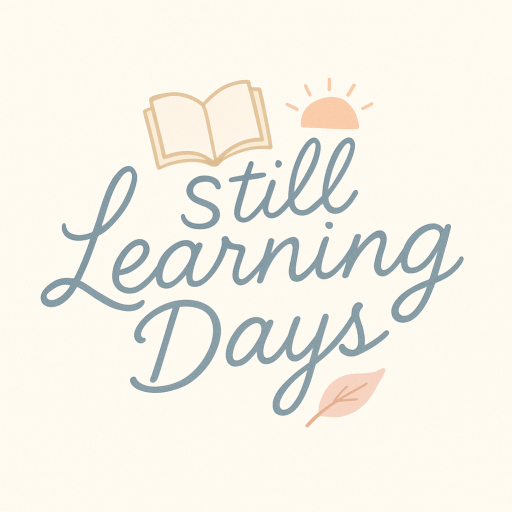3 Essential Savings Accounts You Need to Know as a Newcomer to Canada
When I first arrived in Canada, I kept hearing about Canadian savings accounts like TFSA, RESP, and RRSP, and things like employer matching—but no one really explained what they meant. Even something as simple as opening a bank account felt overwhelming. If you’re feeling as lost as I was, this guide is here to help.
Here’s a simple breakdown of the 3 key savings and investment tools for families in Canada—and how to use them wisely.
1. TFSA – Tax-Free Savings Account
What is it? A TFSA is not just a “savings” account. It’s a tax-free investing account. That means any interest, dividends, or stock gains made inside the account are never taxed, even when you take the money out. It is the ultimate flexible savings tool.
- Who can open one? Anyone aged 18+ with a valid SIN. No income required.
- Contribution limit (2025): The annual limit is $7,000. If you have been a long-term resident (18+ since 2009) and never contributed, your cumulative lifetime room for 2025 is $102,000.
- How to use it: You can keep cash (low risk) or invest in stocks, ETFs, or mutual funds (growth potential). You can open accounts at a bank, credit union, or online brokerage (like Questrade, Wealthsimple).
Tip: You can have multiple TFSA accounts, but total contributions must stay under your limit. Exceeding it leads to penalties from the CRA.
2. RESP – Registered Education Savings Plan
What is it? An RESP is a government-supported savings plan for your child’s post-secondary education. This account is the closest thing to ‘free money’ that the government offers for families.
Why it’s great: The Government Grant The government gives you a guaranteed 20% CESG grant (Canada Education Savings Grant) on what you contribute, up to $500 per year per child. The maximum grant a child can receive lifetime is $7,200.
- Maximizing the Grant: To get the full $500 grant each year, you need to contribute $2,500 annually. Since grants carry forward, if you couldn’t contribute last year, you can contribute up to $5,000 this year to catch up on two years’ worth of grants!
- Bonus for siblings: The total lifetime contribution limit is $50,000 per child. If one child doesn’t go to school, the RESP can often be reassigned to a sibling under a family RESP plan.
Where to open one: I recommend banks for flexibility. Some private firms offer RESPs but may charge high fees and limit your access.
3. RRSP – Registered Retirement Savings Plan
What is it? An RRSP is a government-registered account designed to help you save for retirement. The money you contribute is tax-deductible, meaning it lowers your taxable income today. You only pay the tax when you withdraw the money in retirement (when your income is typically lower). This is a powerful tool for middle- to high-income earners.
The Key Benefits for Newcomers:
- Tax Deduction: Contributions reduce your current year’s income tax bill—this is a huge bonus!
- Home Buyers’ Plan (HBP): As a newcomer, you may be eligible to withdraw up to $60,000 tax-free from your RRSP to buy your first home, provided you repay it within 15 years. This is a critical feature for building financial stability. (Note: The withdrawal limit was increased from $35,000 to $60,000 in April 2024.)
Employer-Sponsored Retirement Matching (The Free Money!): Many jobs offer a retirement plan where your employer matches your contributions, up to a certain percentage. This is one of the easiest ways to double your retirement savings. Always contribute at least enough to get the employer match. Ask HR what plan your job offers and whether you’re automatically enrolled or need to opt in.
⭐ Homeownership Benefits for Newcomers in Quebec & Canada
When I first started looking into buying a home in Canada, I had no idea there were so many programs designed to help first-time buyers—especially newcomers. And honestly, many immigrants miss out simply because no one tells them these programs even exist.
Here are the major benefits available as of 2025, including the one I wish I had known about much earlier.
✔ First Home Savings Account (FHSA) – The Most Powerful Tool in 2025
The FHSA is still relatively new, but it’s now one of the strongest programs for first-time buyers.
Contribution Rules:
- Up to $8,000 per year
- Up to $40,000 lifetime
Why it’s amazing:
- Your contribution is tax-deductible like an RRSP (meaning you get money back at tax time)
- Your investment growth + withdrawals for your first home are tax-free like a TFSA
So essentially, it combines the best parts of both TFSA and RRSP.
Tip:
If you arrived in Canada recently, you can open an FHSA as soon as you meet the residency and tax-filing requirements—even if you don’t have a large income yet. Many newcomers open one with even a small amount just to start building the contribution room.
✔ Federal First-Time Home Buyers’ Tax Credit
The Canadian government gives new buyers a $10,000 tax credit.
This translates into:
- 15% refund = $1,500 directly back on your tax return.
It’s simple, automatic, and you claim it when filing taxes in the year you buy your home.
✔ Quebec First Home Buyers’ Tax Credit
Quebec offers an additional credit on top of the federal benefit.
- Up to $1,500 depending on your situation
- You can combine this with the federal credit
So total savings for Quebec residents can be around $3,000 just in tax credits alone.
💡 Putting It All Together
A newcomer buying a first home can combine:
- RRSP Home Buyers’ Plan (HBP) – withdraw up to $60,000 tax-free
- FHSA – tax-deductible contributions + tax-free withdrawal
- Federal tax credit
- Quebec tax credit
When you stack these benefits, the difference in cash flow is huge.
For many families, it’s the key factor that makes buying a home realistic instead of impossible.
🧐Newcomer Strategy: Where Should You Start?
As a newcomer, you probably don’t have enough money to fully fund all three accounts immediately. Here is the prioritization strategy I recommend for immigrant families in Canada:
- Employer Match First: If your job offers matching contributions (RRSP or Pension), always contribute enough to get the full match. This is literally turning down free money if you don’t.
- RESP Second: After securing the employer match, focus on your RESP. The 20% CESG grant is the highest guaranteed return you’ll ever get, making it an immediate, low-risk win for your children’s future.
- TFSA or RRSP Last: Once you’ve covered the first two, decide between your TFSA (for accessibility and tax-free growth) and RRSP (for tax deduction). If you need easy access to your money for short-term goals, use the TFSA. If you want to lower your taxable income and save for retirement, use the RRSP.
❓FAQ – Frequently Asked Questions
Q1. Can I withdraw money from my TFSA anytime?
Yes! Withdrawals are tax-free and won’t affect your income. The only catch: you must wait until next year to re-contribute the same amount.
Q2. What happens to RESP if my child doesn’t go to university?
You can transfer funds to a sibling, or roll some into your RRSP if you have space. You may have to return government grants.
Q3. Is my employer’s retirement plan better than personal RRSP?
Not necessarily, but if they match contributions, always contribute at least enough to get the match.
🎓 Trusted Resources That Helped Me:
- McGill Personal Finance FAQ – beginner-friendly and clear
- The Dave Ramsey Show (YouTube) – focus on budgeting, debt, and simple investing
- The Money Guy Show (YouTube) – best for intermediate investors or families with financial goals
🧭 Final Thoughts
You don’t need to be a financial expert to start building a strong foundation for your family. Whether it’s saving tax-free, planning for your children’s education, or maximizing your job benefits, understanding these three tools—TFSA, RESP, and employer retirement matching—can make a big difference.
Start small, ask questions, and don’t be afraid to get help. Canada’s financial system may feel unfamiliar, but it’s built to help you succeed.
🔗 Related Reading on Our Site:
👉 5 Best Bank Accounts for Newcomers – Where to open your TFSA or RESP accounts.




